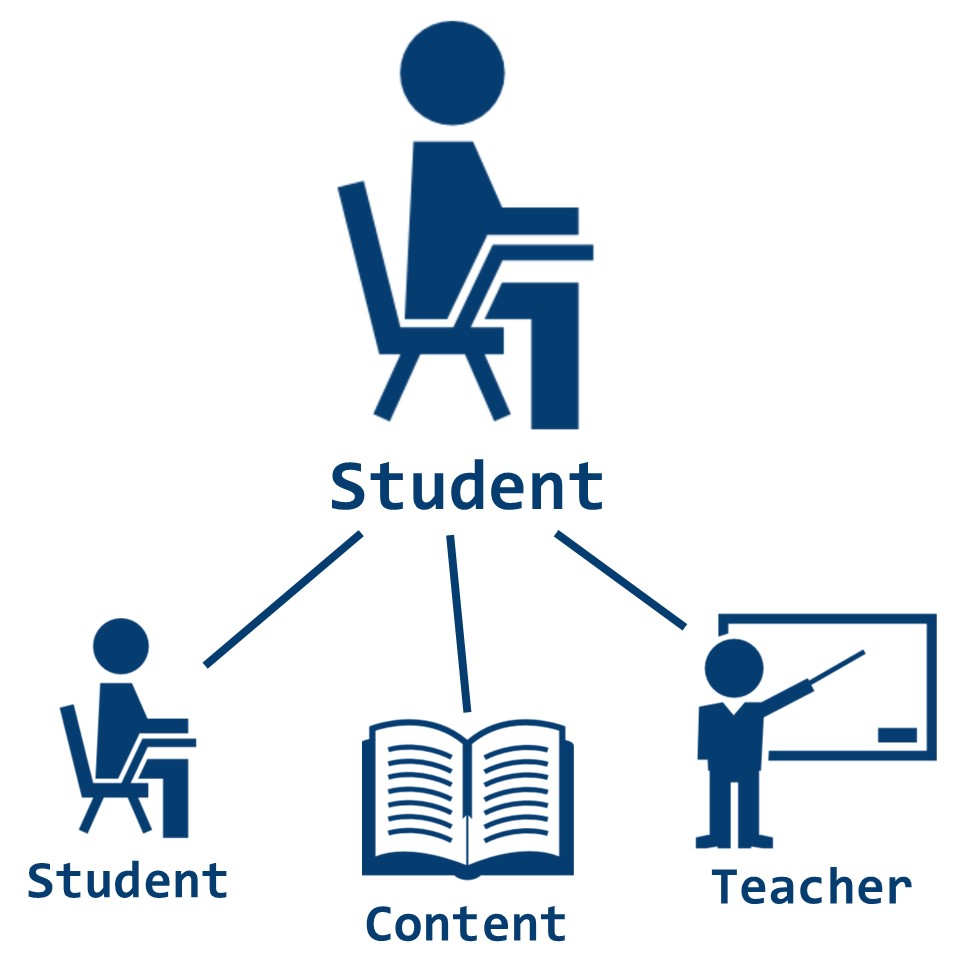
Student to Student Engagement
Creating space where students can form relationships with each other is vital to sustaining engagement. Students need to check their learning with each other in informal ways in addition to more summative assessment activities. When students have the opportunity to connect, the level of trust that develops can improve the learning environment. When that happens, students are more willing to engage with each other and the content of the course.
Best Practices
Provide Clear Expectations
Students need explicit directions when collaborating for an assignment. In an asynchronous environment, this is even more important since there is less opportunity to ask questions informally. Let students know what behavior is expected, such as netiquette in online discussions or roles in groupwork. In particular, engaging controversial topics requires setting ground rules to create space for all voices to be heard.
Make Collaboration Meaningful
Students need opportunities to work together in order to make meaning from course materials, but those opportunities have to genuinely benefit from a group approach. When assigning a group project, make sure that one of your objectives for the project is to have students work collectively to reach a conclusion, present information, or debate a position. Ideally the project allows a small group of students to report back to the larger class with new knowledge that they can share or a project that allows them to collectively determine a course of action or position. These types of activities benefit from the multiple voices in the group. Everyone has something to contribute, and students can practice various leadership roles within the group.
Scaffold Effective Collaboration
Group Work Design
In addition to establishing clear expectations, you often need to provide supports to help students meet those expectations; students don’t arrive at your class knowing how to work together in a group. They need to have parameters for how group work will be accomplished in your class. This is a valuable life skill they can take with them to future classes and job locations, but they need to learn it first. Try a checklist of group expectations or having the group assign positions to each member, clearly outlining expectations for each position (check out our sample group scaffold activity from DIGL 101 for inspiration).
Group Work Management
In “Let’s Give Our Teaching Language a Makeover,”Jennifer Gonzalez suggests that instead of stating the obvious (that the group is having trouble), you can give students agency by “pausing” and asking the group members to articulate the problems and then brainstorm solutions (promote metacognition). In UDL terms, this supports the principles of providing multiple means of engagement and action/expression. You are providing an opportunity to improve self-regulation, self-assessment, and reflection and allowing students to use their own executive functions to monitor progress.
Peer Review
Clear expectations are also important for peer review activities. Students need to learn how to provide effective constructive criticism. We recommend that you provide a rubric for them to use for the review so they can learn what to look for and that you model peer review best practices.
Sample Strategies
- Use an introductions discussion board.
- Use a general discussion board for student questions/comments (note: this is required for fully online courses at Messiah).
- Create topic-based online discussion boards that truly foster discussion/collaboration.
- Create peer feedback opportunities.
- Create group work opportunities.



